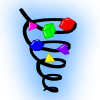25 if (
inA.LengthSq() <
inB.LengthSq())
63 float d11 =
v1.LengthSq();
100 float d12 =
v1.Dot(v2);
121 float c2 =
inC.Dot(v2);
159 template <
bool MustIncludeC = false>
277 if (
d1 <= 0.0f &&
d2 <= 0.0f)
287 if (
d3 >= 0.0f &&
d4 <=
d3)
305 if (
d6 >= 0.0f &&
d5 <=
d6)
412 template <
bool MustIncludeD = false>
#define JPH_NAMESPACE_END
Definition Core.h:367
std::uint32_t uint32
Definition Core.h:442
#define JPH_NAMESPACE_BEGIN
Definition Core.h:361
constexpr T Clamp(T inV, T inMin, T inMax)
Clamp a value between two values.
Definition Math.h:45
constexpr T Square(T inV)
Square a value.
Definition Math.h:52
AllocateFunction Allocate
Definition Memory.cpp:59
static JPH_INLINE UVec4 sReplicate(uint32 inV)
Replicate int inV across all components.
Definition UVec4.inl:56
JPH_INLINE float Dot(Vec3Arg inV2) const
Dot product.
Definition Vec3.inl:637
JPH_INLINE Vec3 Cross(Vec3Arg inV2) const
Cross product.
Definition Vec3.inl:582
JPH_INLINE float GetX() const
Get individual components.
Definition Vec3.h:123
static JPH_INLINE Vec3 sSelect(Vec3Arg inV1, Vec3Arg inV2, UVec4Arg inControl)
Component wise select, returns inV1 when highest bit of inControl = 0 and inV2 when highest bit of in...
Definition Vec3.inl:269
JPH_INLINE float LengthSq() const
Squared length of vector.
Definition Vec3.inl:653
static JPH_INLINE Vec3 sZero()
Vector with all zeros.
Definition Vec3.inl:107
static JPH_INLINE UVec4 sLessOrEqual(Vec4Arg inV1, Vec4Arg inV2)
Less than or equal (component wise)
Definition Vec4.inl:194
static JPH_INLINE UVec4 sLess(Vec4Arg inV1, Vec4Arg inV2)
Less than (component wise)
Definition Vec4.inl:180
static JPH_INLINE UVec4 sGreaterOrEqual(Vec4Arg inV1, Vec4Arg inV2)
Greater than or equal (component wise)
Definition Vec4.inl:222
static JPH_INLINE Vec4 sReplicate(float inV)
Replicate inV across all components.
Definition Vec4.inl:74
Helper utils to find the closest point to a line segment, triangle or tetrahedron.
Definition ClosestPoint.h:14
bool GetBaryCentricCoordinates(Vec3Arg inA, Vec3Arg inB, float &outU, float &outV)
Definition ClosestPoint.h:18
Vec3 GetClosestPointOnTriangle(Vec3Arg inA, Vec3Arg inB, Vec3Arg inC, uint32 &outSet)
Definition ClosestPoint.h:160
UVec4 OriginOutsideOfTetrahedronPlanes(Vec3Arg inA, Vec3Arg inB, Vec3Arg inC, Vec3Arg inD)
Definition ClosestPoint.h:362
Vec3 GetClosestPointOnTetrahedron(Vec3Arg inA, Vec3Arg inB, Vec3Arg inC, Vec3Arg inD, uint32 &outSet)
Definition ClosestPoint.h:413
bool OriginOutsideOfPlane(Vec3Arg inA, Vec3Arg inB, Vec3Arg inC, Vec3Arg inD)
Check if the origin is outside the plane of triangle (inA, inB, inC). inD specifies the front side of...
Definition ClosestPoint.h:340
Vec3 GetClosestPointOnLine(Vec3Arg inA, Vec3Arg inB, uint32 &outSet)
Definition ClosestPoint.h:132

